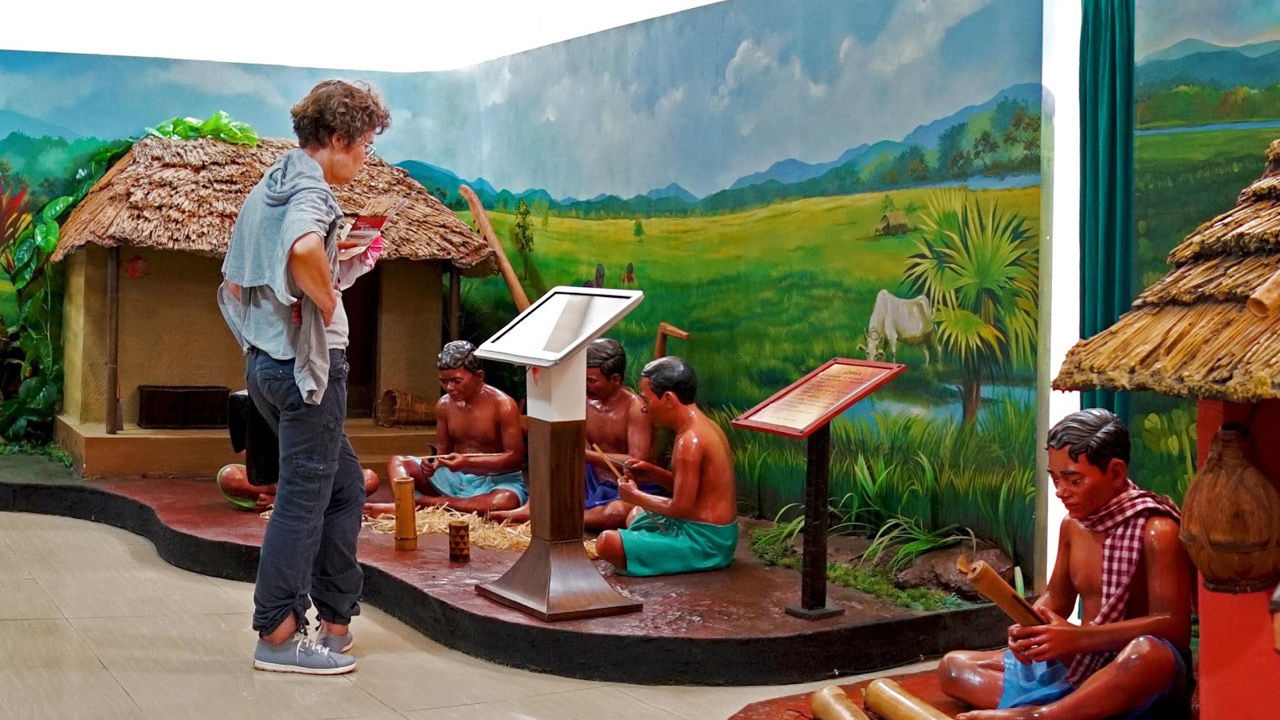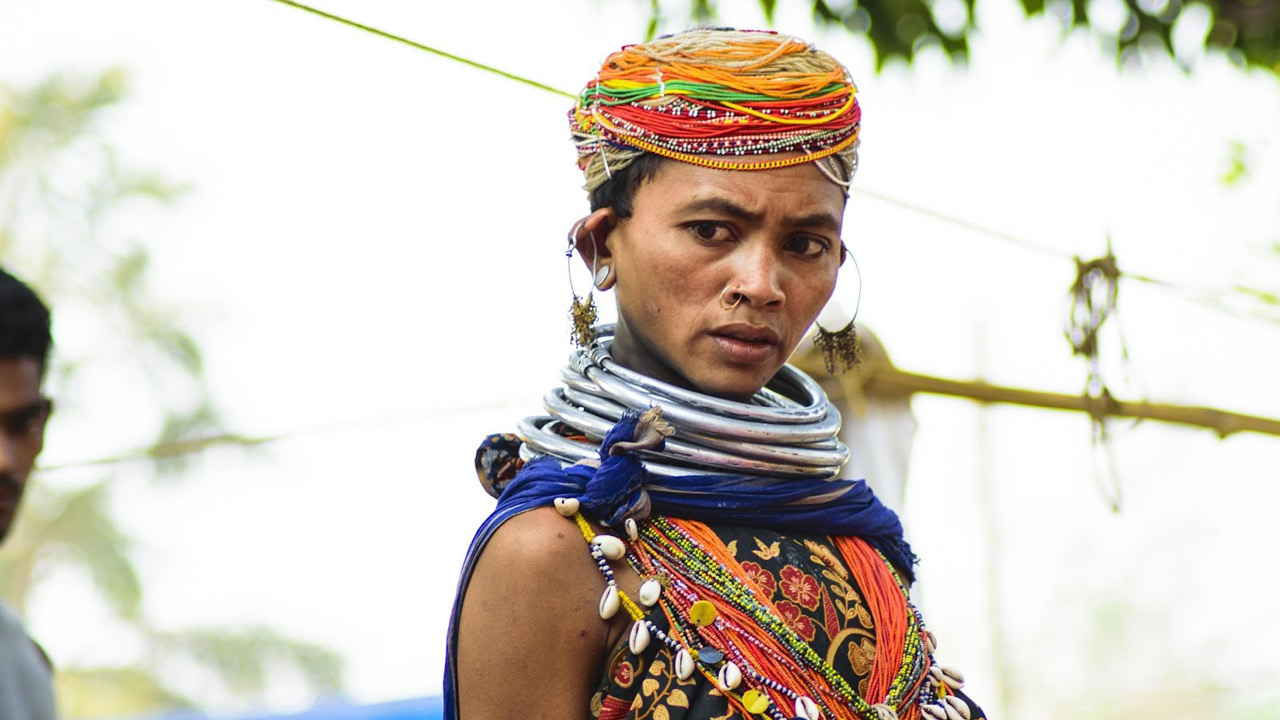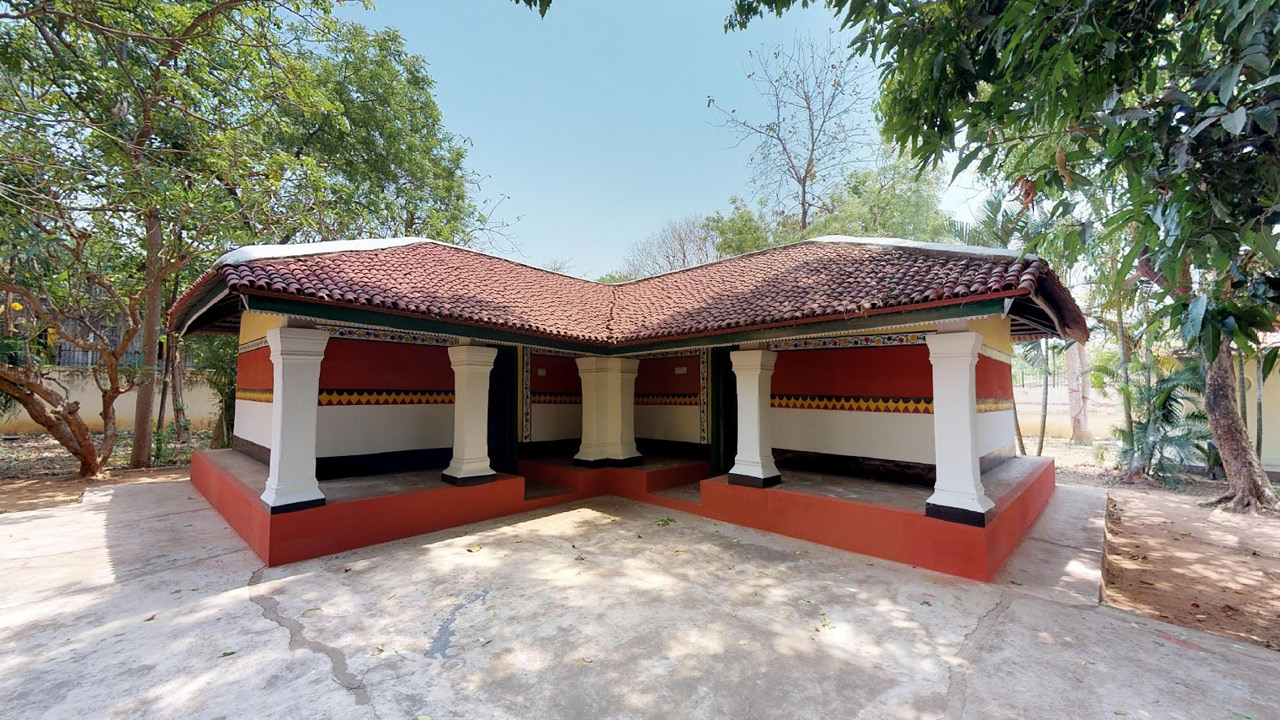Digitising Heritage: Virtual Tour of Odisha State Tribal Museum

Digitising Heritage: Virtual Tour of Odisha State Tribal Museum
Problem
- Transforming Real Life Spaces into 3D Models
- Making the Tribal Museum accessible to visitors, researchers, school students, enthusiasts and other stakeholders from across the globe during the Covid-19 lockdown
- Sensitisation and awareness about Virtual Tour and accessing the tribal museum through a digital platform
- Developing Digital content for the Virtual Tour of the Museum
Solution
- Design and launch of the Virtual Tour of the Tribal Museum, one of its kind of technological innovation
- Developing Documentary Films & Virtual Tour Videos
- Transform Real Life Spaces like museums, Galleries, and Tribal huts into immersive digital 3D Models
- Weekly Posting of the Films and Tour Videos on social media platforms (Facebook/Twitter etc)
Outcomes
- Reached out to the global audience
- Successfully realizing the vision of Digital India and the 5T Initiative of the Government
- Making Tribal Museum accessible to people overcoming the Covid 19 restrictions
- Engaging experts and scholars across the globe in tribal discourse and discussions
Project Details
Category: Culture
Project Title: Virtual Tour of Odisha State Tribal Museum
Department or District: Scheduled Castes & Scheduled Tribes Research & Training Institute (SCSTRTI), Khordha District
State: Odisha
Start Date of the Project: 2nd August 2020
Website: https://www.scstrti.in/
Tribe(s) that the Project Covers: 62 tribal communities of Odisha including 13 Particularly Vulnerable Tribal Groups (PVTGs)
Keywords: Tribal Museum, Virtual Tour, Digital India, COVID-19, Tribal Communities, PVTG, Immersive Technology, Culture, Tribal Heritage, Innovation
The Virtual Tour of the Odisha State Tribal Museum is a pioneering initiative by the Scheduled Castes & Scheduled Tribes Research & Training Institute (SCSTRTI), under the ST & SC Development Department, Government of Odisha. It was conceived as a digital response to the global pandemic, which necessitated the closure of physical public spaces, including museums. With an average pre-pandemic footfall of over 100,000 annually, the Odisha State Tribal Museum in Bhubaneswar had been a vibrant hub for scholars, students, tourists, and tribal art enthusiasts. When COVID-19 forced the museum to shut its doors, SCSTRTI leveraged technological innovation to ensure continued public access to the museum’s rich tribal heritage.
The Project
Launched on August 2, 2020, the Virtual Tour of the Odisha State Tribal Museum offers a 360-degree immersive experience of the museum’s galleries, tribal huts, and curated exhibits. The project is in line with the Digital India Mission and Odisha’s 5T governance initiative—Technology, Transparency, Teamwork, Time, and Transformation. Through social media platforms like Facebook, Twitter, and YouTube, the virtual museum engages a global audience every Sunday with newly uploaded content such as documentaries, short films, and interactive virtual tours.
Problems that it Intends to Solve
The primary problem addressed was the inaccessibility of the Tribal Museum due to the COVID-19 lockdown. The physical closure of the museum threatened to cut off scholars, school students, tourists, and cultural enthusiasts from engaging with Odisha’s rich tribal legacy. Another significant issue was the risk of disconnect between the general public and tribal knowledge systems, rituals, art, and history, which the museum traditionally helped bridge.
What was the Need
Given the museum’s importance as an educational and cultural institution, the sudden halt in visitor engagement created an urgent need for an alternative medium of access. Preserving the continuity of cultural education and public outreach, especially during a period of social distancing and mobility restrictions, necessitated a digital solution. Additionally, the project aimed to contribute to broader national and state-level goals of digital inclusion and governance transformation.
What Hindered its Introduction
Key constraints included the need to digitize physical spaces in high fidelity, develop quality content that matched the museum’s academic rigor, and promote the concept of virtual engagement among audiences unfamiliar with such formats. Moreover, technical limitations, content development logistics, and public awareness posed initial barriers to the project’s initiation.
Process Followed for Implementation
- Government
- SCSTRTI spearheaded the project with guidance from the ST & SC Development Department, integrating it into broader governance missions such as 5T and Digital India. Weekly coordination ensured that content was uploaded consistently and media channels were optimally utilized.
- Involvement of Community
- While the virtual format limited direct community involvement in the technical process, the content heavily featured tribal communities and their practices. This inclusion ensured representation and visibility for these communities on a global platform.
Solutions Implemented
The core solutions implemented include:
- Designing and launching the virtual tour platform
- Developing documentary films and immersive virtual tour videos
- Creating 3D models of real-life museum spaces including galleries and tribal huts
Weekly dissemination of content via official social media platforms
Details of the Coverage
The virtual tour reached a global audience, with over 100,000 unique visitors recorded within the first year of its launch. Targeted audiences include scholars, anthropologists, government officials, school students, tribal development professionals, and international researchers.
Innovation and Unique Features
- New Approaches: Tech integration, capacity building, culturally sensitive methods
- Use of PRO2 and 360-degree cameras for immersive 3D rendering
- Weekly updates and live content via social media to ensure continuity
- Culturally sensitive representation of tribal traditions, artefacts, and practices
- Co-creation: How tribal knowledge or leadership shaped the solution
- Tribal knowledge formed the backbone of the content—documentaries and 360-degree tours portrayed real tribal shrines, dwellings, art forms, and music. Though not explicitly co-created, the representation was built on SCSTRTI’s ethnographic research and long-standing engagement with tribal communities.
- Any adaptations: How the project evolved during implementation
- Originally envisioned as a 12-week programme, the initiative was extended to 59 weeks due to overwhelming public response. A total of 82 content posts were made across various digital platforms, indicating adaptive scalability.
Challenges Faced Before Implementation
- Internal Challenges
- Development of relevant and authentic digital content
- Training teams for 3D modeling and digital transformation
- External Challenges
- Generating public awareness about the virtual tour
- Encouraging audience engagement in the absence of physical interaction
- Mitigation Efforts
- To address these, SCSTRTI undertook regular publicity through print and digital media and ensured that updates were made on a fixed schedule to build audience habits. Informative posts and engaging visuals were used to attract and retain interest.
Challenges Faced During Implementation
- Internal Challenges
- Content curation and technological skill-building
- Technical complexities of converting real-life spaces into interactive formats
- External Challenges
- Audience unfamiliarity with virtual museum formats
- Maintaining continuity and consistency of content delivery over an extended timeline
- Mitigation Efforts
- Awareness campaigns and weekly content delivery helped establish routine engagement. High-quality audiovisual content created sustained interest over time.
Outcomes
- Quantitative
- 100,000+ visitors accessed the virtual tour in 59 weeks
- 82 curated posts published on Facebook and Twitter
- Weekly reach increased substantially due to consistent updates
- Qualitative
- Enhanced global access to tribal heritage of Odisha
- Stimulated interest in tribal studies during a period of global isolation
- Contributed to state and national digital governance missions
Continuous monitoring was achieved through tracking social media engagement, viewer analytics, and qualitative feedback from stakeholders. The measurable increase in digital footfall indicated successful project outreach and effectiveness.
Replicability / Scalability / Sustainability
- Policy Integration
- The initiative aligned with the Government of Odisha’s 5T framework and India’s Digital India vision. This policy alignment ensured official support and legitimacy.
- Financial Sustainability
- Future plans include developing a dedicated mobile app, e-content for each exhibit, and virtual tour guides, with a proposed budget of ₹100 lakh. This indicates intent for long-term sustainability.



